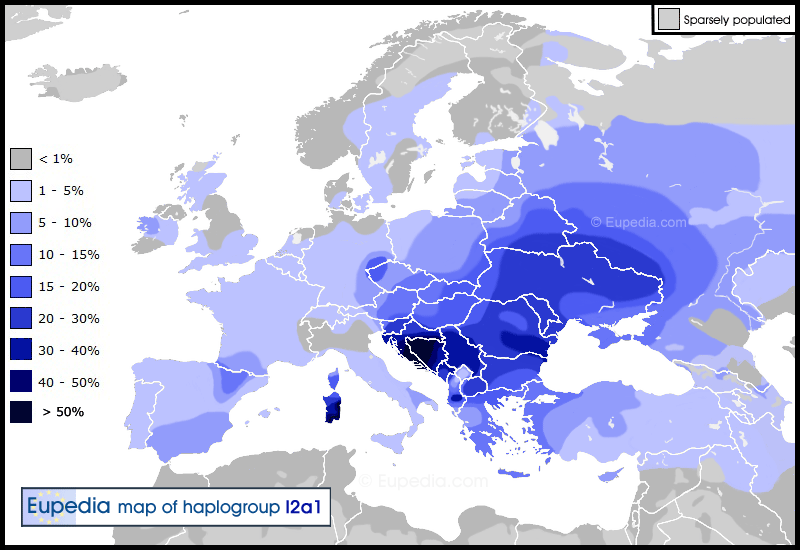even according to Maciamo's conservative table I2a-Din in Serbia amounts to 34.5% (Mirabal's study shows 38.5% of I2a-Din and ~48% haplogroup I for Serbia)
however that is not clear from the map that Maciamo made...
this is Serbia
I want to see range between 30 and 40% for Serbia and not a hole that should be in Kosovo and north Albania
Another thing is hotspot in Croatia and Herzegovina...
thing is it is somewhat lower than on map... it is strongest in area of Pagania and in areas where Serbs lived in Croatia
e.g. look at Figure 4 in work from the work where your data for Croatia comes from
Review of Croatian Genetic Heritage as Revealed by
Mitochondrial DNA and Y Chromosomal Lineages
Marijana Peričić, Lovorka Barać Lauc, Irena Martinović Klarić, Branka
Janićijević, Pavao Rudan
although the work is recently hidden from public display, it can still be found on internet....
compare I1b in Figure 4 with historic data - I1b is Serb settled areas in Croatia plus Pagania
this is map of Serb settlements in Croatia prior to wars according to official census
http://en.wikipedia.org/wiki/Republic_of_Serbian_Krajina
according to only historical source talking about origin of people from Pagania they are in his time unbaptized Serbs
http://books.google.nl/books?id=3al...istrando imperio&pg=PA165#v=onepage&q&f=false
on this map you can see where is Pagania - at least south part of west Herzegovina (hotspot of I2a-Din in Bosnia) plus islands Hvar and Korčula (hotspot of I2a-Din in Croatia)
regarding 42% of I2a-Din in tables for Croatia, it comes from same work due to taking half samples from low populated islands of Pagania where I2a-Din is around 50-60% and half samples from rest of Croatia where it is much less.... it is very far from truth to have 42% as number characterizing Croatia as whole... it is like claiming Italy has 45% of I2a1 based on half samples from certain area of Sardinia and half from rest of Italy....





